It is not unusual for me to find deer antler sheds around my fields and pastures, such as the ones pictured above. I try to keep a sharp eye out for them in the fall, particularly when I am using the tractor to bush-hog our fields. Why the sharp lookout?
In the photograph above there is a small tine from a deer antler that I keep on my desk. It reminds me of the day I found it, lodged in the sidewall of a perfectly good rear tractor tire. Seeing as this tine cost me about $400.00, I figure that it can at least serve as a paper weight for a short period of penitence.
We find the sheds so often that I thought I would begin to mount them and display them on a wall. I was in Bass Pro Shop in Springfield, Missouri about 5 years ago, when I saw an antler mounting kit for sale at a reasonable price. I bought one, and soon had a pair of shed antlers proudly on display above my office desk, as you can see in the photograph above.
Something looked peculiar with the antlers I had hanging on the wall, but I couldn’t quite put my finger on what it might be. Then, one day as I was browsing through some deer photographs, it dawned on me – the antlers hanging on my wall looked odd because I had mounted them upside down!
Oops! I was about to climb up on my desk to retrieve the plaque with the mis-mounted antlers, when it occurred to me that it might be fun to leave them as they were, and see how long it would take until somebody noticed the error in my faulty craftsmanship.  To date (about 5 years now) no one has said a thing. I wonder how long this streak will run?
This mistake could have been avoided if only the antlers appeared in my pastures and fields just like the ones I found today –
I ran across this specimen as I was performing a few grounds keeping chores today. You can clearly see the correct orientation of the antlers relative to the skull on this young buck. There is no way even a dummy like me could botch this up ;)
I am surmising that this buck was relatively young, as there were no missing teeth, and the teeth looked to be sharp and undamaged. Various other skeletal remains were located in the vicinity of this skull. Perhaps he was brought down by a pack of coyotes, and then the carcass picked clean by vultures and other critters.

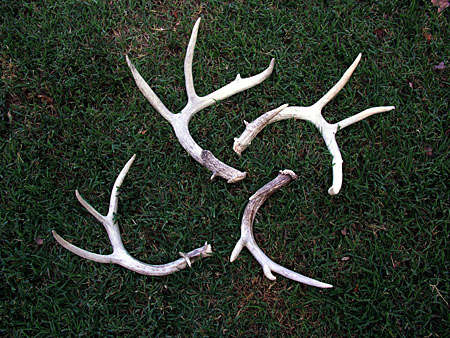
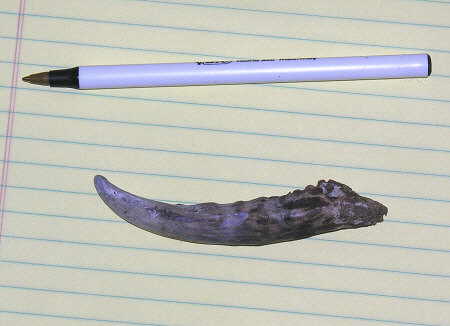
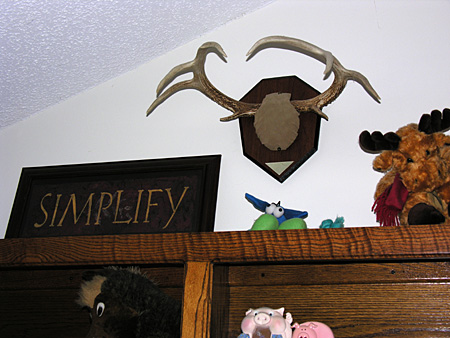
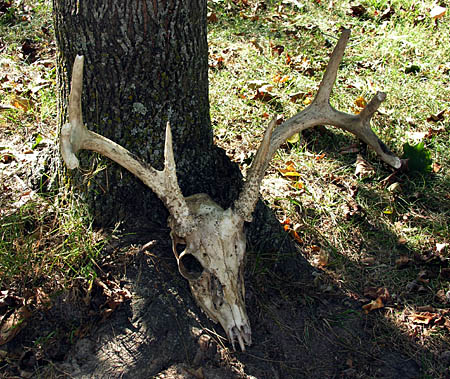
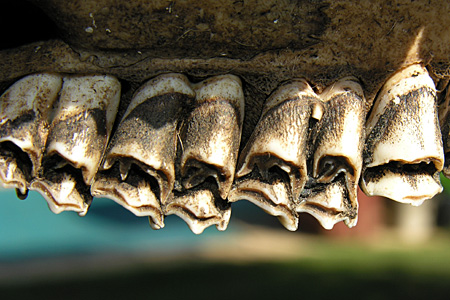


Don’t the number of points on a rack indicate how old the deer was? If so, would that make this (former) deer four years old? That’s relatively long for a deer, isn’t it?
Pablo – According to http://www.whitetails.com, the only true way to determine the age of a deer is by examining the teeth. The most accurate method cuts a cross section of the tooth and counts the layers of cementum, much like counting the rings on trees to determine their age.
The following link has a nice set of dental photos and criteria for determining age-
http://www.whitetails.com/deer_info/age_determination.cfm
I could not use it to accurately age this specimen because it uses the lower jaw for much of the ID work, and I didn’t find the lower jaw.
According to http://www.kerrlake.com/deer/teeth.html , the number of antler points in no way corresponds to age.
Internet references to estimates of the lifespan of whitetail deer are all over the map, so I can’t comment on what it actually is. Some appear to have survived to age 20, although this seems to be rare.
I did and would have noticed that your deer antlers are odd but I doubt that I would have mentioned it to you. I merely thought that was why you had picked those antlers to mount until I read the next few sentences.
I once helped my father hang some printed wall board with a nice floral design and it was only when we got to the second to last piece in a large room that we realized there was an orientation needed. As luck would have it, all but one were correctly oriented and until the house was bulldozed in several years back, that one stayed upside down for the same reasons plus it had too many nails in it to be removed and salvaged.
I don’t think a pack of coyotes would be able to take down a mature buck of that size. Natural causes, or perhaps being injured by either a car or hunter would be my guess. Deer can travel long distances when injured.
I agree with Justin, a deer that size would’nt be taken down by coyotes unless he was sick, it is likely he was shot or hit by a car and ran possibly a mile or so before dying. My brother shot a deer and we never found it, it is a shame but it happens.
I agree that happens allot Chase iv been there and done that. still havent found it yet. there is allot of coyates out there though its a possibilty. most likely it got hit by a car cause the tips are broken!
Pingback: Ranch Ramblins » Blog Archive » Mys-deer-ious Mystery
There are many shed hunters that walk hundreds of miles every spring as a hobby collecting shed antlers. If you are having problems with antler/farm machinery I’m sure you could find someone who would volunteer or even work/pay for permission to collect sheds on your property. try putting a flyer up at a local sporting good store along with pics of your sheds, I would jump at the chance. I live in southern wisconsin and spend the greater part of january 1 —- june… searching. Good Luck with your shed antler problem/BLESSING.
The skull above is 3 1/2+yrs. Its hard to determine a definite age unless the teeth are examined by a “professional”, but I would guess its only 3yrs by the spindly frame and because the teeth don’t seem to worn down. Also the tines don’t seem to busted, but chewed. I find many antlers and dead bucks each year, and if the antlers fall in areas with high rodent populations (squirrels, purcipines sp?) the antler can be chewed beyond recognition within weeks. However antlers that fall off in fields may last for years (only bleached by the sun), field mice do not reek havoc on antlers as other rodents.
The tips aren’t broken, they’ve just been chewed off by either a squirrel or a chipmunk. That’s why sheds dont usually stick around too long after being detatched, especially in an area with a high squirrel poulation. Nice skull though, you should sand the chewed tips to hide the chew marks and get rid of the jagged edges, bleach and clean the whole thing, then stain the rack with antler finish. It would make for a great wall hanger.